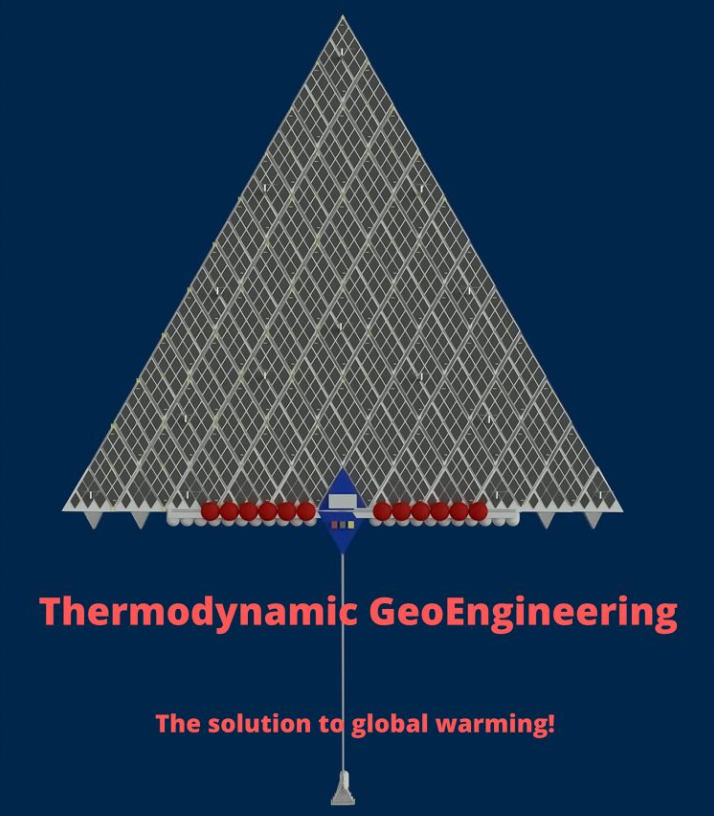
A planet that runs on water has been the dream of mankind for centuries and the nightmare of the fossil fuel and nuclear power industries.
Thermodynamic geoengineering (TG) turns the dream into a reality. About 93% of the heat of global warming is going into the ocean, making it increasingly thermally stratified. This stratification is like a thermal dam 326 metres high straddling the breadth of the tropics that is accumulating greater height every year. TG converts a portion of the heat of warming in heat engines to produce twice the energy being derived from fossil fuels. The bulk of the heat is sent to a depth of 1,000 meters, whence it gradually returns to the surface and is recycled until all the heat has been consumed and the waste heat of the energy conversion is harmlessly lost to space. A process that provides close to 3,000 years of constant, sustainable, power.
The loss to space is aided by the conversion of electricity in an electrochemical process that produces hydrogen, consumes carbon dioxide and neutralizes ocean acidity. In as little as 7 years, at full power, the existing accumulation of carbon dioxide in the atmosphere can be sequestered in the depth of the oceans with the two processes that also cool the surface and reduce sea level rise and storm surge.
Although some are calling for reduced energy consumption as the solution to global warming, the reverse is true. The more energy produced by TG and converted to hydrogen by the electrochemical process, the more greenhouse gas is consumed, and the more climate mitigation is achieved.
The late Richard Smalley, Nobel laureate in Chemistry, in his 'Terawatt Challenge' pointed out, “To give all 10 billion people on the planet the level of energy prosperity we in the developed world are used to, a couple of kilowatt-hours per person, we would need to generate 60 terawatts around the planet—the equivalent of 900 million barrels of oil per day.” And that this energy is the solution to the next nine items on his list of the top 10 issues facing mankind.
The politicians tell us we still have a few years until we start running into the climate tipping points, but our carbon budget is actually already blown.
The energy produced by these processes is too cheap to metre because it costs less than fossil fuel subsidies and the environmental cost of doing business. It is also, hands down, at a minimum a third the existing record low price for solar energy, the cheapest energy available.
A viable, pollution-free, no-cost, energy source has been the persistent dream throughout the ages. The fact it has never emerged, has spawned countless conspiracy theories about governments, corporations, and special interest groups suppressing nascent endeavors, which it turns out are true.
Politicians and policymakers who condone the gouging of the electorate with energy prices that are twice what they should be, while depriving the electorate of twice the environmental benefit they deserve, aren’t worthy of their office nor their place in society.